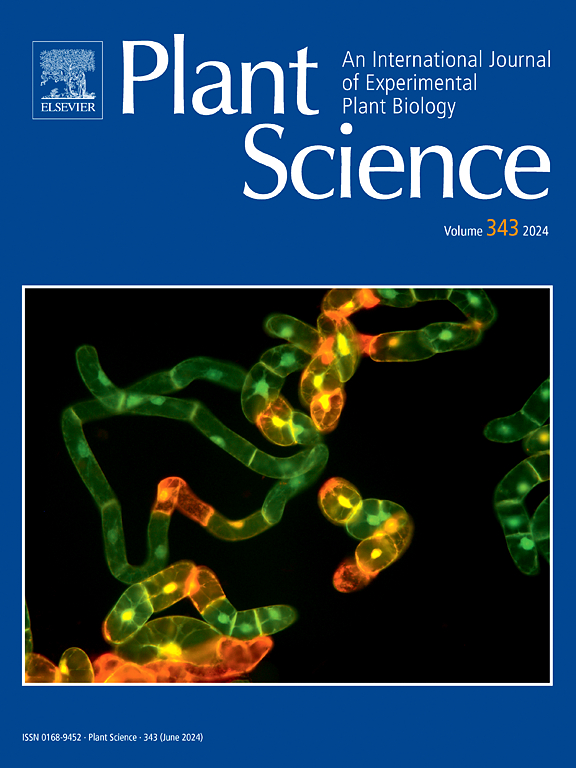Dark-induced decrease in ascorbate levels in Arabidopsis leaves occurs independently of ascorbate peroxidase and oxidase, recycling enzymes, and senescence signaling
IF 4.2
2区 生物学
Q2 BIOCHEMISTRY & MOLECULAR BIOLOGY
引用次数: 0
Abstract
Ascorbate is a key antioxidant that protects plant cells from oxidative damage. While plants actively synthesize ascorbate during the day, its degradation becomes prominent under prolonged dark conditions. Since ascorbate degradation begins with its oxidized form, dehydroascorbate (DHA), this process inherently requires ascorbate oxidation. However, the molecular mechanisms underlying dark-induced ascorbate oxidation and subsequent degradation remain unclear. In this study, we investigated the role of intracellular and extracellular ascorbate redox regulation in controlling this process. Using Arabidopsis knockout mutants for key enzymes involved in ascorbate oxidation and recycling, including ascorbate peroxidase (APX), monodehydroascorbate reductase (MDAR), dehydroascorbate reductase (DHAR), and ascorbate oxidase (AO), as well as NADPH oxidases (rbohD and rbohF), we found that none of these enzymes significantly influenced the dark-induced decrease in ascorbate levels. Notably, ascorbate levels decreased similarly in newly generated multiple mutants, including a quintuple mutant (∆dhar pad2 mdar5), which has severely impaired ascorbate recycling capacity, and the ao2 rbohD double mutant, which is strongly expected to exhibit a highly altered apoplastic redox state. Furthermore, we examined the potential involvement of senescence signaling, including ORESARA1 and ethylene signaling components, but found no evidence for their contribution. These findings indicate that the dark-induced decrease in ascorbate levels is not governed by conventional pathways for ascorbate oxidation and recycling or senescence signaling processes, suggesting an unidentified regulatory mechanism.
黑暗诱导的拟南芥叶片抗坏血酸水平下降不依赖于抗坏血酸过氧化物酶和氧化酶、再循环酶和衰老信号。
抗坏血酸是保护植物细胞免受氧化损伤的关键抗氧化剂。当植物在白天积极合成抗坏血酸时,它的降解在长时间的黑暗条件下变得突出。由于抗坏血酸的降解开始于它的氧化形式,脱氢抗坏血酸(DHA),这个过程本质上需要抗坏血酸氧化。然而,暗诱导抗坏血酸氧化和随后降解的分子机制尚不清楚。在这项研究中,我们研究了细胞内和细胞外抗坏血酸氧化还原调节在控制这一过程中的作用。利用拟南芥基因敲除突变体中参与抗坏血酸氧化和循环的关键酶,包括抗坏血酸过氧化物酶(APX)、单脱氢抗坏血酸还原酶(MDAR)、脱氢抗坏血酸还原酶(DHAR)和抗坏血酸氧化酶(AO),以及NADPH氧化酶(rbohD和rbohF),我们发现这些酶都没有显著影响黑暗诱导的抗坏血酸水平下降。值得注意的是,在新产生的多个突变体中,抗坏血酸水平也同样下降,包括严重损害抗坏血酸再循环能力的五倍突变体(∆dhar pad2 mdar5)和ao2 rbohD双突变体,其极有可能表现出高度改变的脂质氧化还原状态。此外,我们研究了衰老信号的潜在参与,包括ORESARA1和乙烯信号成分,但没有发现它们的贡献的证据。这些发现表明,黑暗诱导的抗坏血酸水平下降不受抗坏血酸氧化和再循环或衰老信号传导过程的传统途径的控制,表明一种未知的调节机制。
本文章由计算机程序翻译,如有差异,请以英文原文为准。
求助全文
约1分钟内获得全文
求助全文
来源期刊

Plant Science
生物-生化与分子生物学
CiteScore
9.10
自引率
1.90%
发文量
322
审稿时长
33 days
期刊介绍:
Plant Science will publish in the minimum of time, research manuscripts as well as commissioned reviews and commentaries recommended by its referees in all areas of experimental plant biology with emphasis in the broad areas of genomics, proteomics, biochemistry (including enzymology), physiology, cell biology, development, genetics, functional plant breeding, systems biology and the interaction of plants with the environment.
Manuscripts for full consideration should be written concisely and essentially as a final report. The main criterion for publication is that the manuscript must contain original and significant insights that lead to a better understanding of fundamental plant biology. Papers centering on plant cell culture should be of interest to a wide audience and methods employed result in a substantial improvement over existing established techniques and approaches. Methods papers are welcome only when the technique(s) described is novel or provides a major advancement of established protocols.
 求助内容:
求助内容: 应助结果提醒方式:
应助结果提醒方式:


